Rose mosaic is a common disease caused by several different viruses. These viruses affect roses worldwide, as well as apples and stone fruit trees. In roses affected by the mosaic virus, you’ll see yellow bands or splotches of yellow and green on leaves.
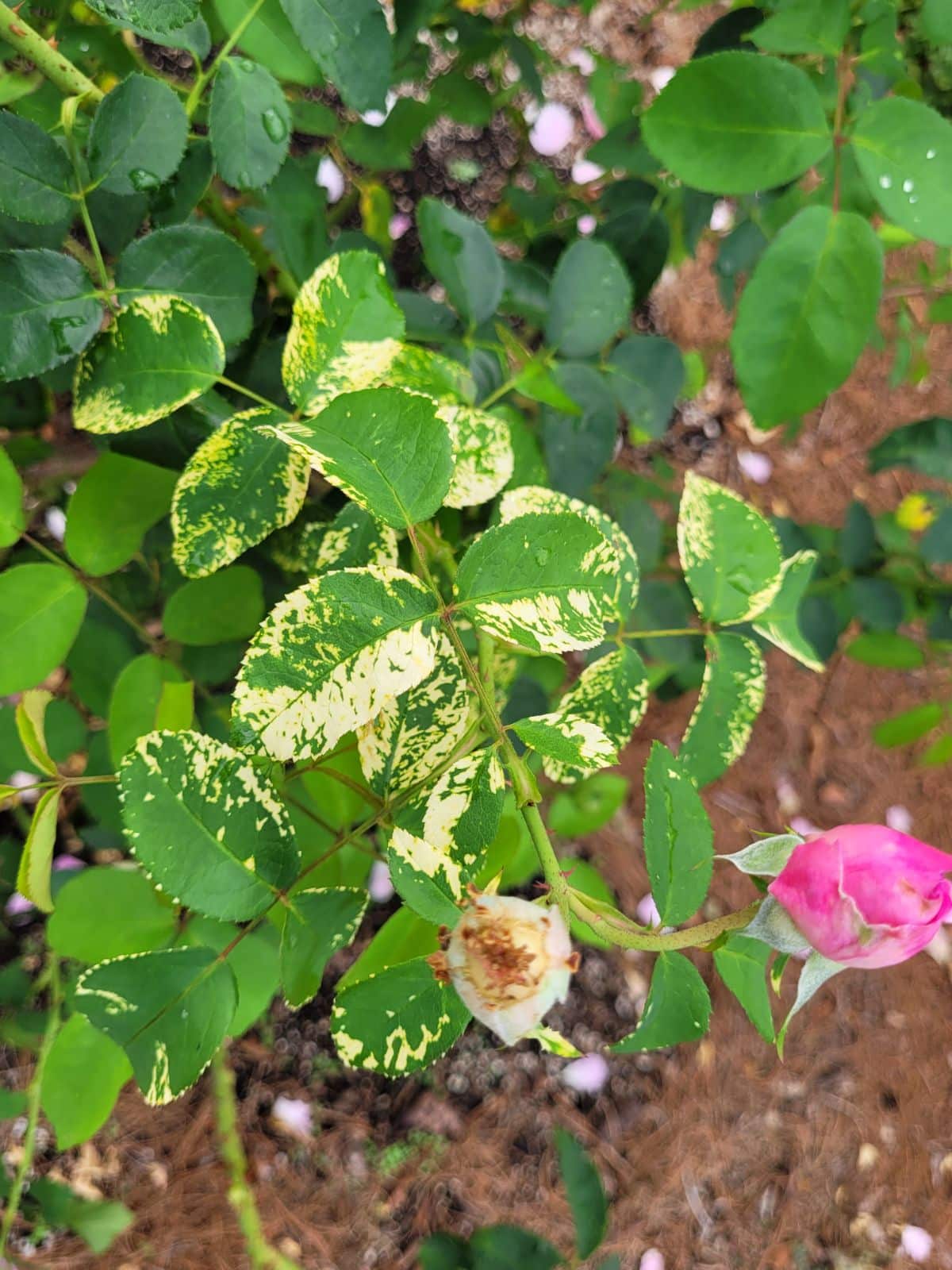
Mosaic virus might seem harmless because it shows up only on a few leaves. However, infected plants are weakened, bloom less, and become susceptible to winter kill.
Even though there is no cure for a rose infected by mosaic virus, you can manage the disease so it doesn’t spread. Read on!
Jump to:
What is Rose Mosaic Virus?
Rose mosaic virus is not a single virus but a group of them that can include:
- Prunus necrotic ringspot virus
- apple mosaic virus
- Arabis mosaic virus
- strawberry latent ringspot
- tobacco ringspot virus
- tomato ringspot virus
In unscientific terms, rose mosaic is made up of a gang of viruses that roam around attacking roses and other plants.
Sometimes, the rose infected with the mosaic virus doesn’t show any symptoms.
Severe symptoms indicate that there are multiple viruses involved in the rose mosaic infection. Most virus strains aren’t obvious and won’t cause a lot of problems because one virus can’t do the damage that multiple viruses can.
Symptoms of Mosaic Virus in Roses
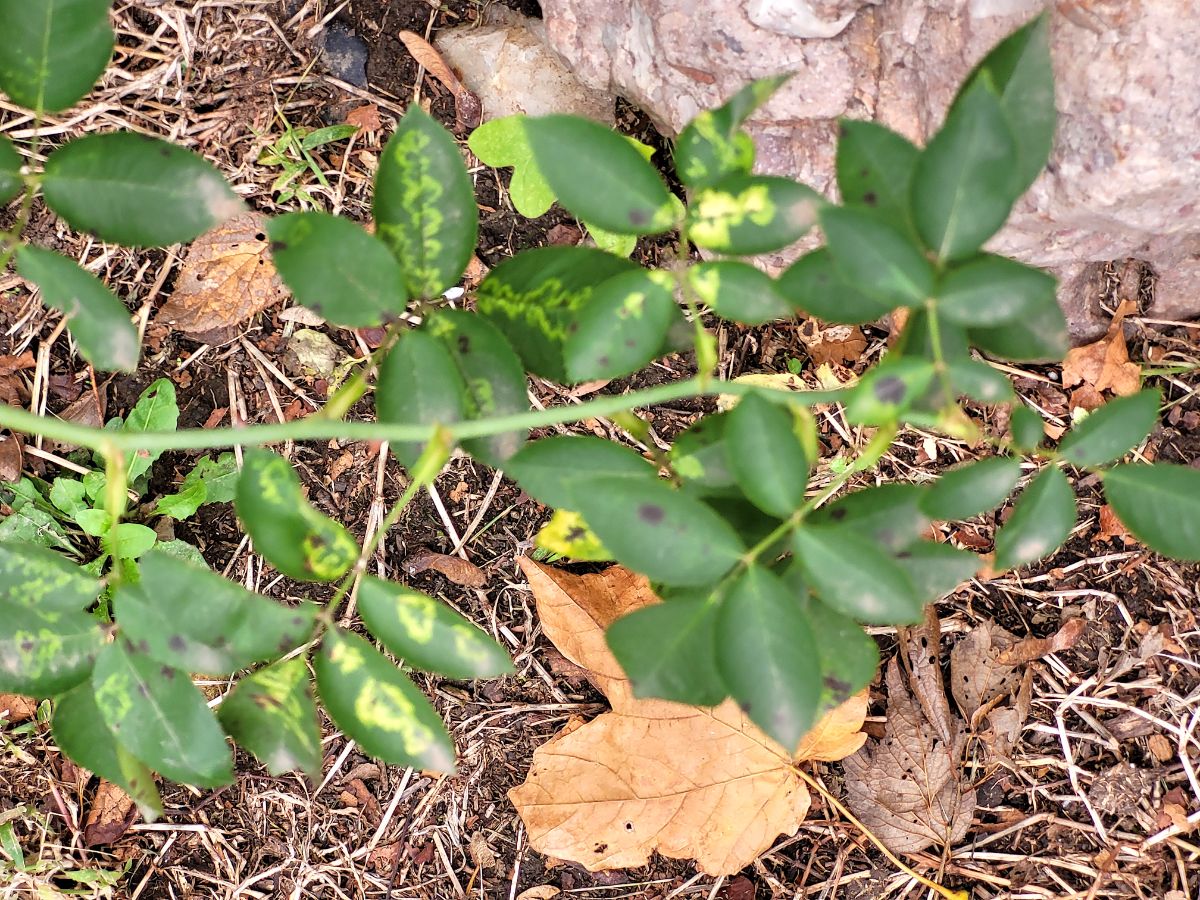
The problem with having so many different viruses in this complex means that there’s no real “one size fits all” look for a rose mosaic.
In mosaic-infected roses, you’ll usually see yellow stippling, lines, or spots on the leaves. Sometimes, leaves are slightly wavy or deformed. Some mottling is very bright. Some mottling is subtle and blends in, so it’s hard to notice. It appears on the leaf in all kinds of different shapes.
Leaf symptoms of mosaic show up mainly during the spring flush.
Often, the rosebush seems to be healthy except for that one cane or one area that shows the infected yellow leaves. However, mosaic is a systemic disease. As the viruses spread through the rose’s system, the plant will eventually weaken, though this takes several years. These roses bloom less and less.
Because mosaic is a virus, so there’s no cure. The diseased portion of the rose can be removed, but if the rest of the virus has already spread through the plant, you haven’t fixed the problem. The symptoms will pop up elsewhere.
Is Science Still Unclear on How Mosaic Virus is Spread?
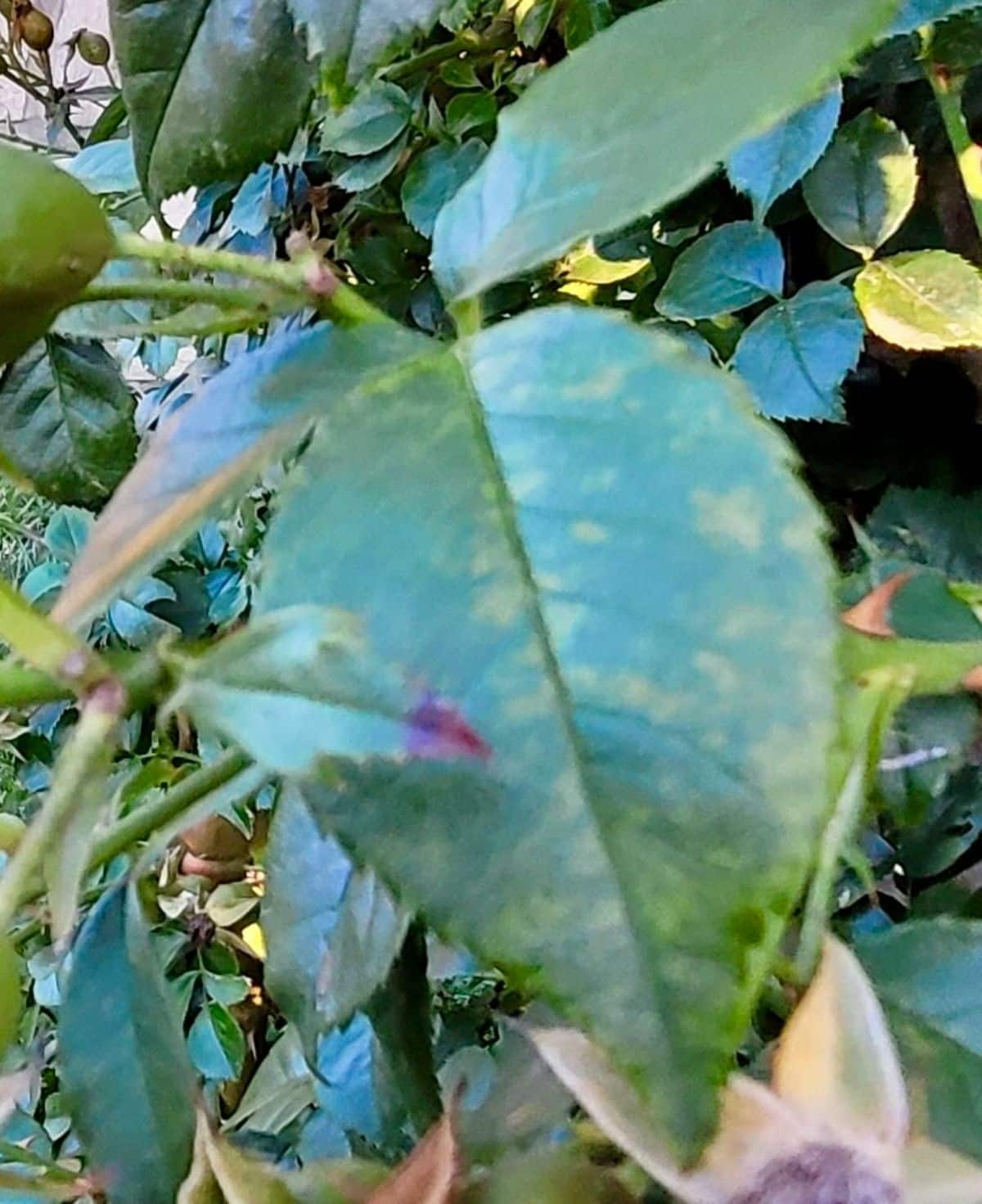
Yes. There is still controversy and confusion about how roses catch the mosaic virus. Again, because you have all these different viruses in play, things can get confusing.
However, the biggest reason for the confusion is that there is a real dearth of knowledge regarding rose viruses in general. It’s not that these viruses are hard to find. It’s mainly due to a lack of scientific funding and not enough people willing to pursue this field.
So, How Do Roses Get Infected with Rose Mosaic Disease?
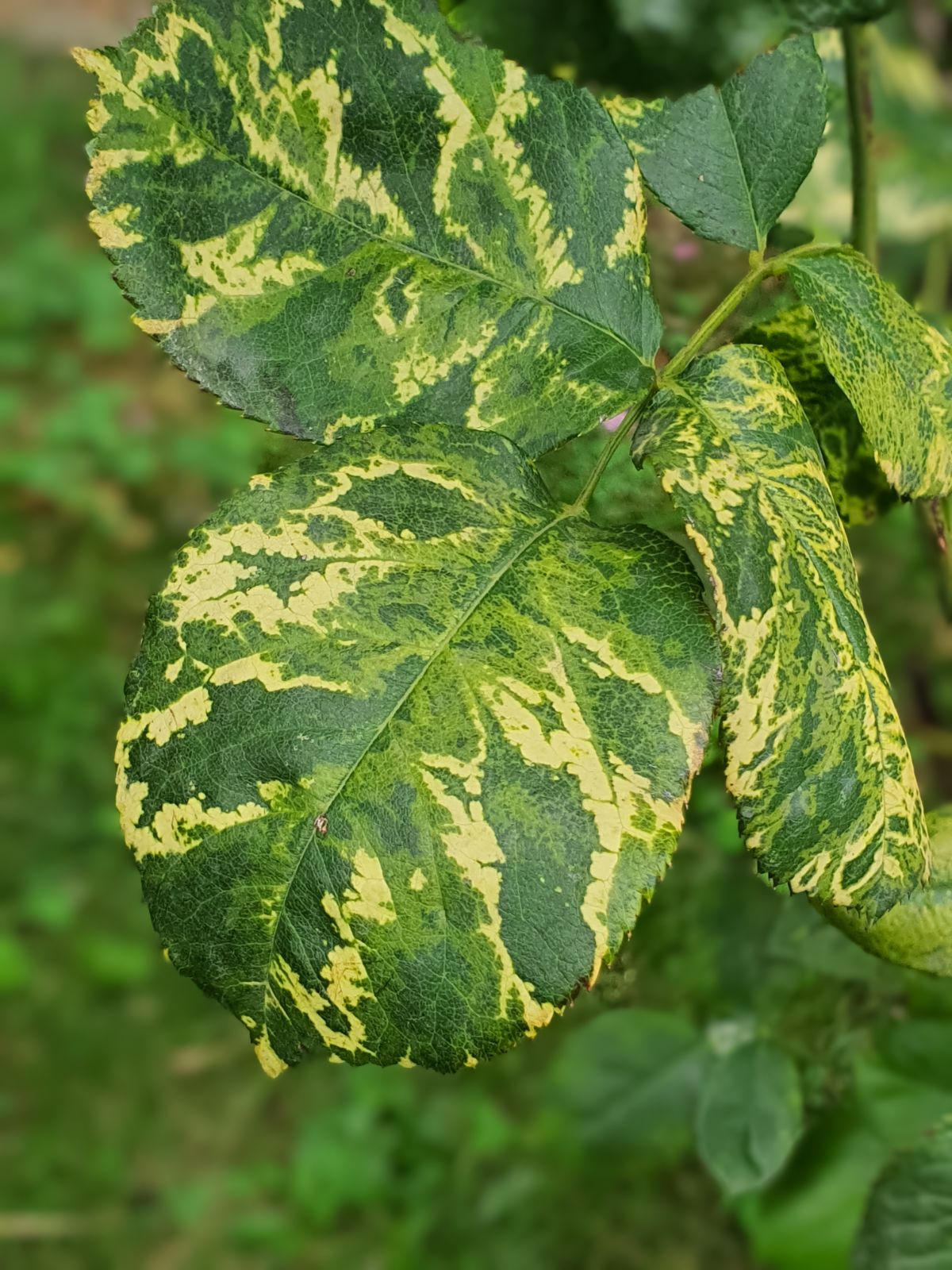
There are a couple of possible ways, each of which are still under debate. We need more studies into mosaic virus in roses in a wider variety of conditions to get a better understanding of how these viruses spread.
Here is what the science kind of agrees on.
Grafting or budding. If you graft an uninfected rose on an infected rootstock, the disease will spread into the uninfected part. The same goes for budding (grafting buds onto a rose bush).
Mosaic-infected plants can also spread the disease by root grafting – when their roots grow onto nearby rosebushes underground.
According to a study done in 2007, virus spread was observed in multiple trials when healthy roses were planted about 30 cm (about 12 inches) away from infected roses. After the first year, 10% of the healthy roses were infected; after the second year, the spread was up to 48%.
How did the scientists realize the virus was spread via root grafting? They sprayed one of the roses with systemic herbicide, so it died. The roses that had been planted close to it developed herbicide toxicity symptoms. A root graft underground would have allowed this systemic herbicide – as well as the mosaic disease – to pass to the other roses.
Other Possible Means of Infection

Aphids, Thrips, Nematodes, Whiteflies, Mites. These tiny, soft insects can serve as vectors of disease – that is, they can carry diseases from plant to plant. It is possible that insects or arthropods can spread this virus to roses. Nematodes can spread the Arabis mosaic virus – so if this virus strain is in your roses and you have nematodes, beware!
Pollen. In the study from 2007 cited above, pollen from virus-infected roses was applied to 173 uninfected plants for 3 years, but all these roses tested negative for the virus – which suggests that the virus is not spread via pollen.
However, a different study showed that PNRSV could be pollen-transferred in fruit trees. That means that it’s possible for this particular mosaic virus to be spread to roses – though perhaps less likely.
After all, it’s desirable for fruit trees to give pollinators easy access to lots of pollen, while on some roses, it’s hard to even find the anthers in the first place! In light of this, pollen probably isn’t a cause of infection.
Pruners or secateurs. Happily, mosaic virus in roses is not spread from plant to plant via clippers, pruners, or secateurs. It’s still a good idea to sanitize them between roses.
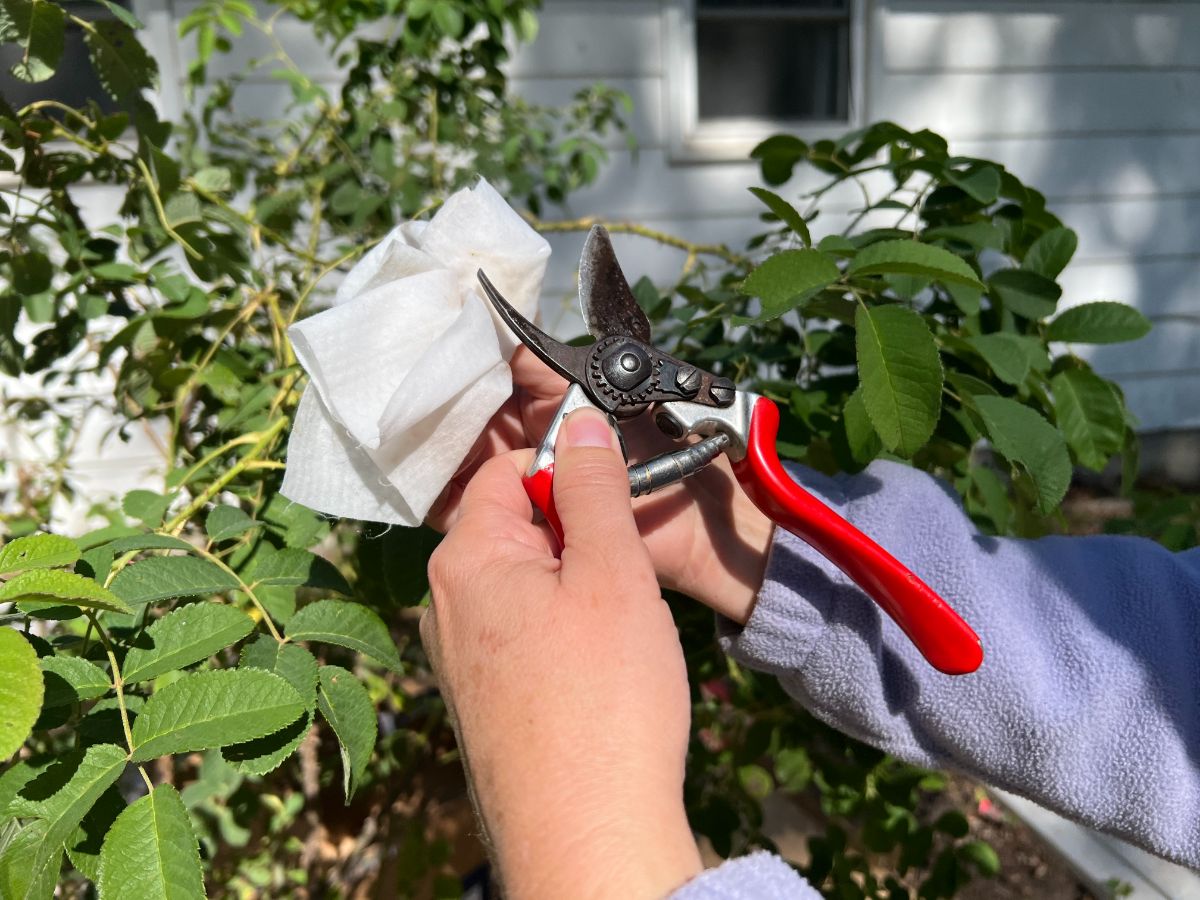
Cigarettes or cigars. If you smoke, don’t put your cigarette butts in the compost or soil. The tobacco can contain tobacco mosaic disease, which can spread to roses, tomatoes, or other plants. The fire in your cigarette is not hot enough to destroy the mosaic virus. A compost heap won’t affect it, either – unless the compost heats up to over 1000 degrees Celsius!
Rose seeds. Fortunately for rose breeders, the seedlings grown from the seeds of virus-infected roses do not seem to have rose mosaic disease passed on to them.
Easy Ways to Prevent Rose Mosaic Virus
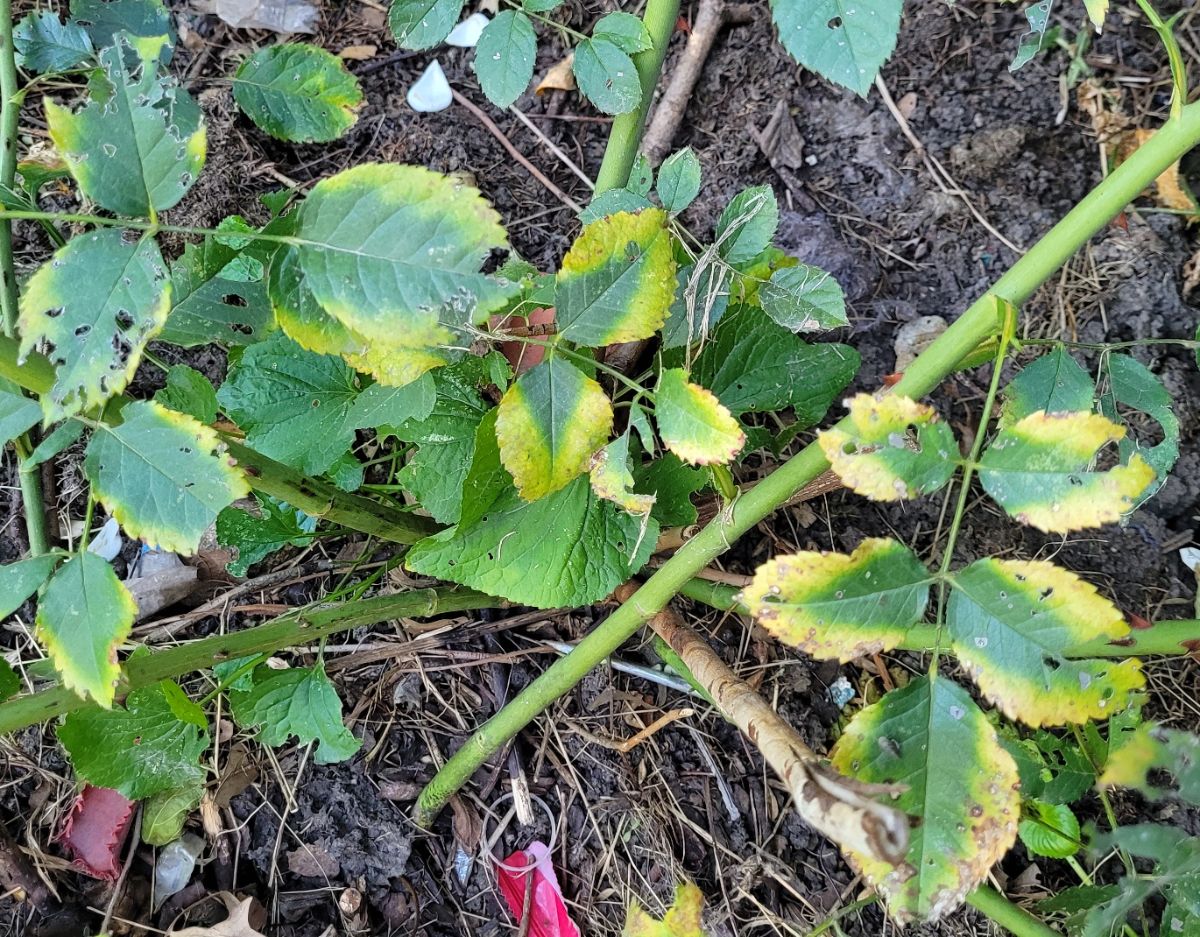
Since the mosaic virus in roses can’t be cured, you have to prevent it. The biggest way is to promote good health in your roses.
- Give them a nice, thick layer of organic mulch all year around, not just in winter.
- Water them every week, and give them compost several times a year to build the soil.
- Don’t crowd your roses. Plant them 3 or more feet apart, depending on how large they get, to keep their roots from grafting together.
- Buy roses from growers that sell stock that’s been tested for viruses and is certified virus-free.
- Don’t take cuttings or starts from infected rosebushes.
- Dig up your mosaic-infected rosebush and get it out of the garden.
Do I Have to Dig Up My Mosaic-Infected Rosebush?
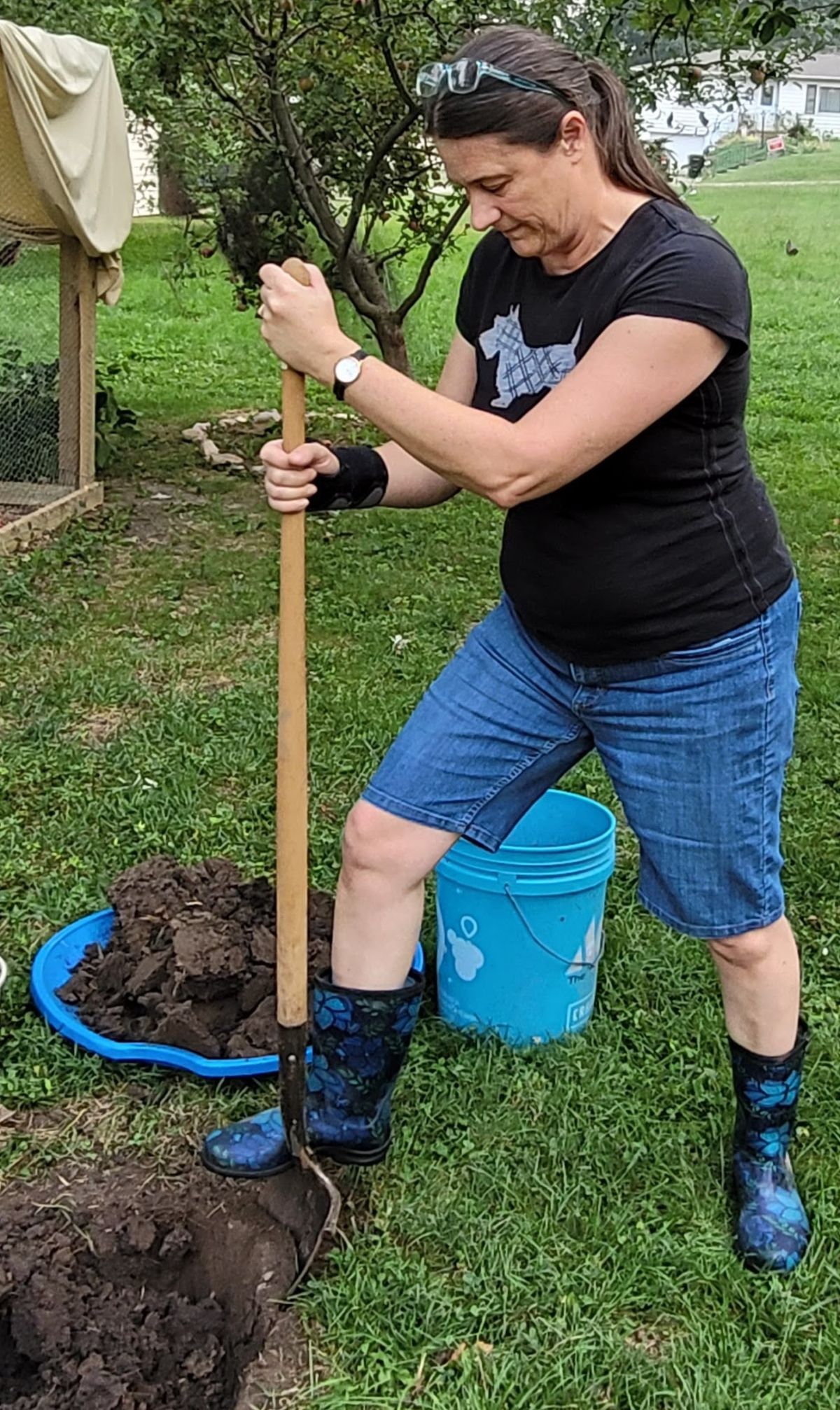
It depends.
Since rose mosaic disease is caused by a virus, there’s no cure for an infected rose.
Some people just let the infected rose grow if it’s far away from other roses and doesn’t seem to be causing any issues.
Personally, if the virus-infected rose is doing fine and is still blooming and seems to have no other problems, I’d be fine with letting the rose stay where it is – but I’d watch that rose like a hawk to make sure symptoms don’t get worse, and the mosaic virus doesn’t spread.
Most rosarians recommend digging up the infected rose bush, taking it out of the garden, and burning it. BUT burn it far away from the garden so any ashes don’t float over and settle back into your rose garden!
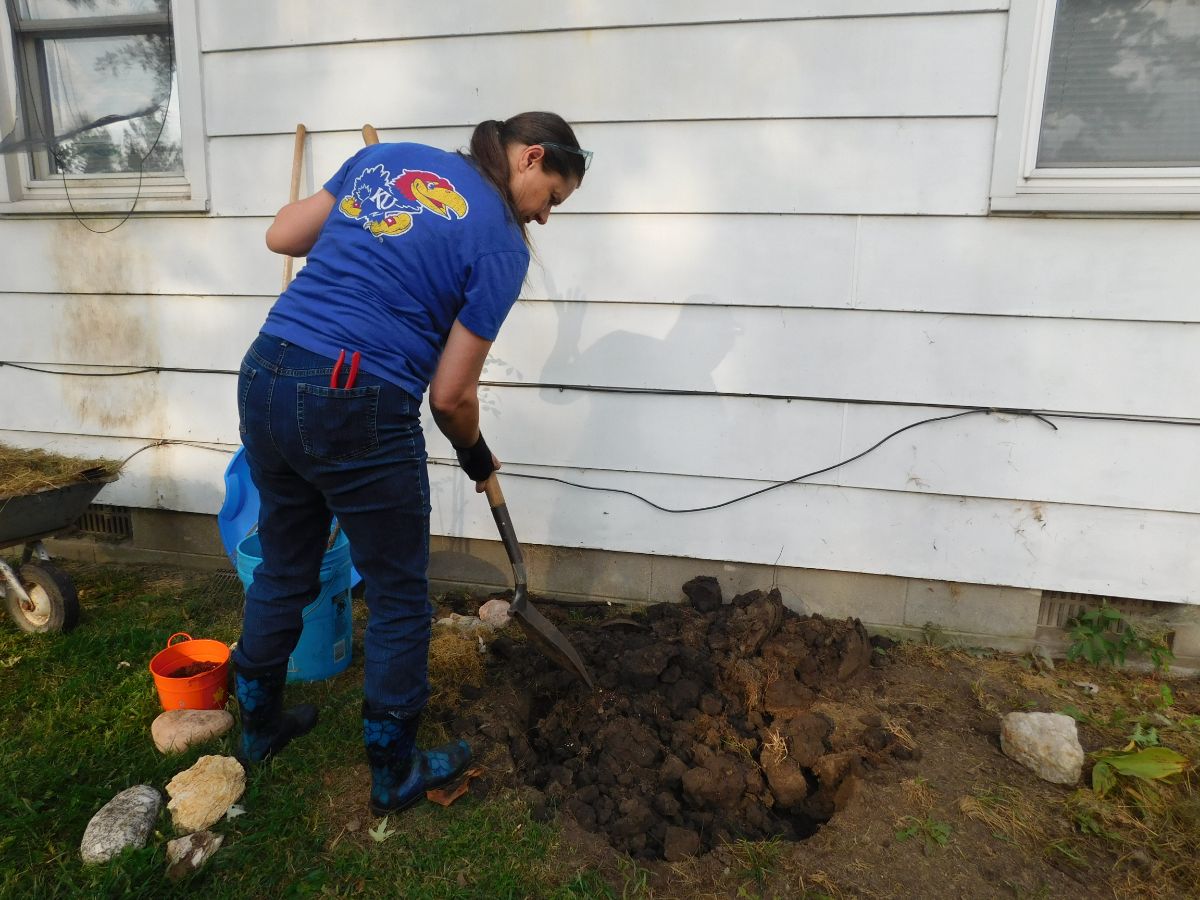
If your garden design demands that a rose grows in this spot, then dig out the soil and get rid of any roots that still linger in the soil. As with rose rosette disease, a new rose’s roots might graft onto the old rose’s roots, and catch rose mosaic disease from them.
Then, put in fresh soil with lots of organic matter when you’re planting a new rose. Read more about the best ways to plant a rose here.
Otherwise, plant your rose’s replacement in a different place. Instead, plant a perennial or shrub that is NOT a member of the rose family in that spot.
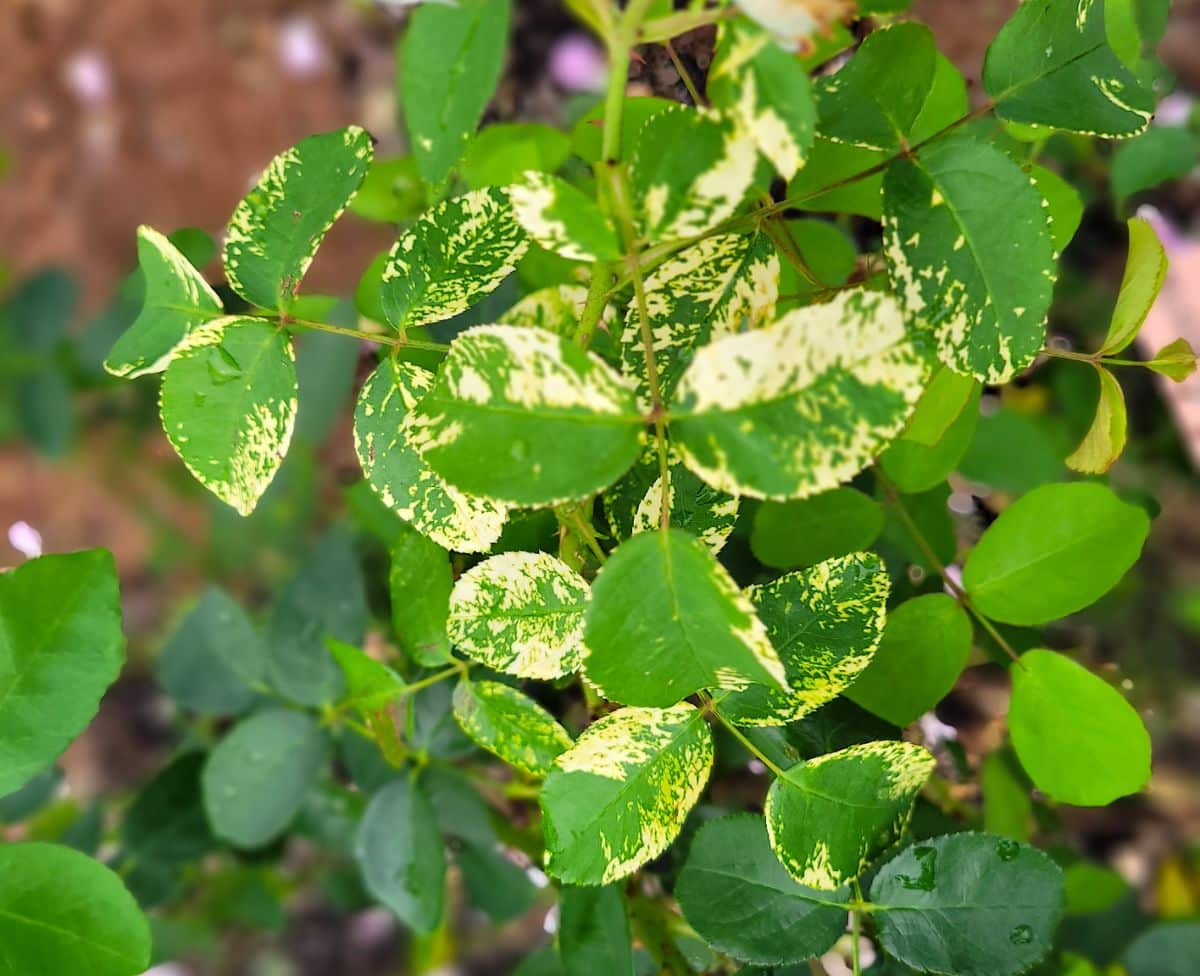
Rose mosaic virus can be a pain in the neck – but there are ways to “nip it in the bud.” Paying attention to preventative measures and good garden hygiene are two of the best ways to keep it from ever appearing among your roses in the first place.

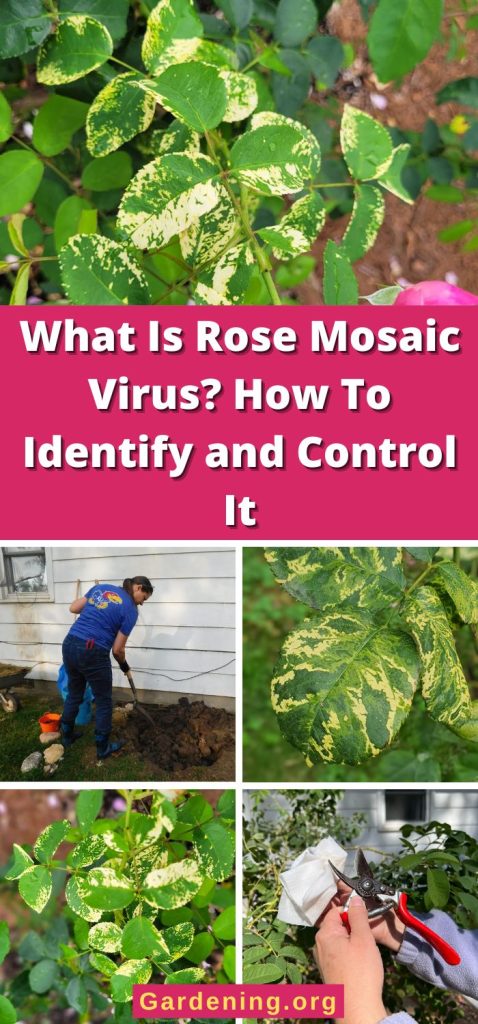
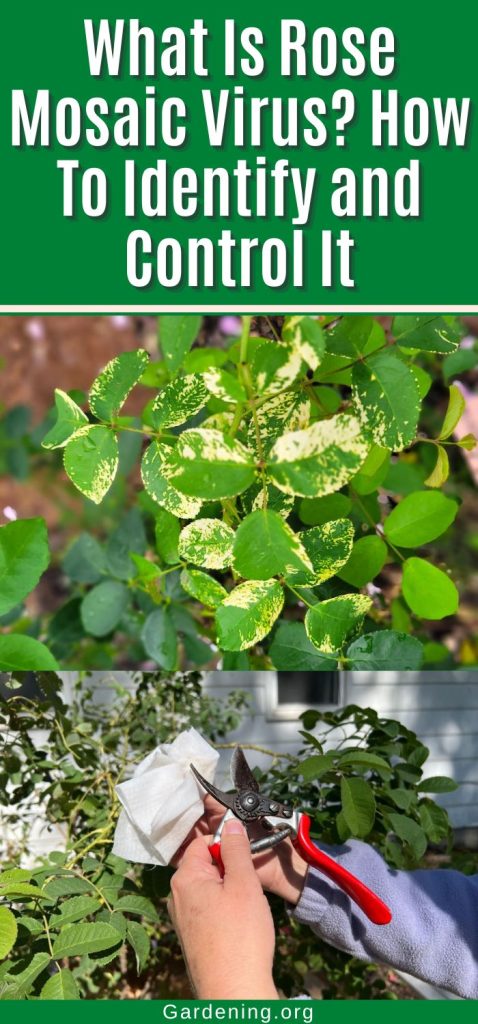
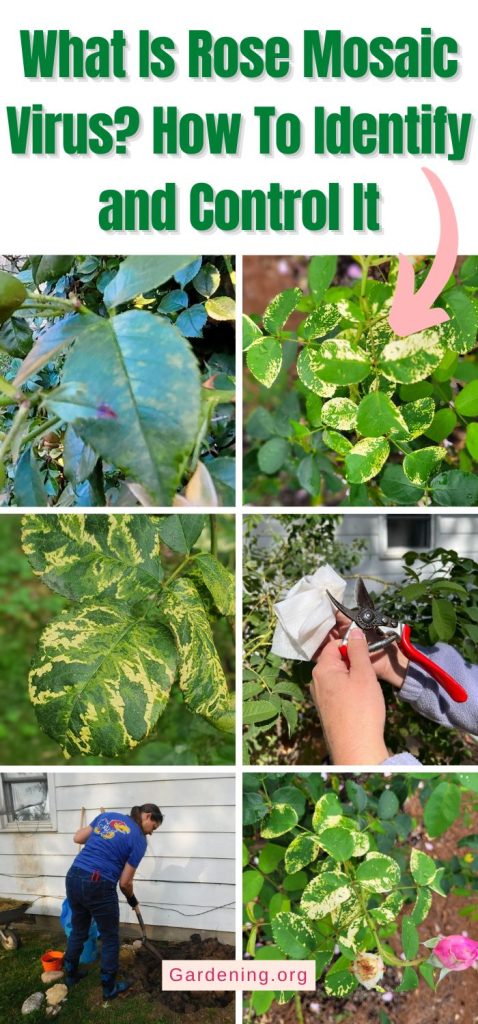





Leave a Reply